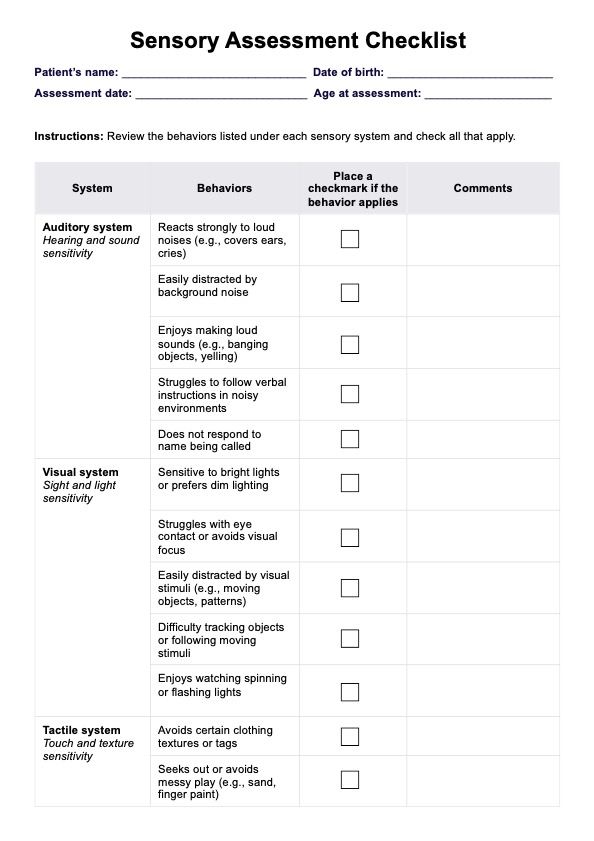The Sensory Assessment Checklist is a preliminary procedure for identifying sensory processing preferences, patterns, and sensitivities. It helps healthcare practitioners, such as occupational therapists, educators, and caregivers, identify a client's strengths and challenges, which can be used to devise intervention plans, activities, and strategies.

Sensory Assessment Checklist
Get our free Sensory Assessment Checklist to identify clients' sensory processing challenges, improve sensory integration, and support daily activities.
Use Template
Sensory Assessment Checklist Template
Commonly asked questions
The checklist is most typically administered as a recommendation by health professionals involved in pediatric care, such as pediatricians and physical therapists.
The Sensory Assessment Checklist is typically administered for children, with an infant to toddler range (7 to 35 months) and a child to adolescent range (3 to 14 years).
EHR and practice management software
Get started for free
*No credit card required
Free
$0/usd
Unlimited clients
Telehealth
1GB of storage
Client portal text
Automated billing and online payments











